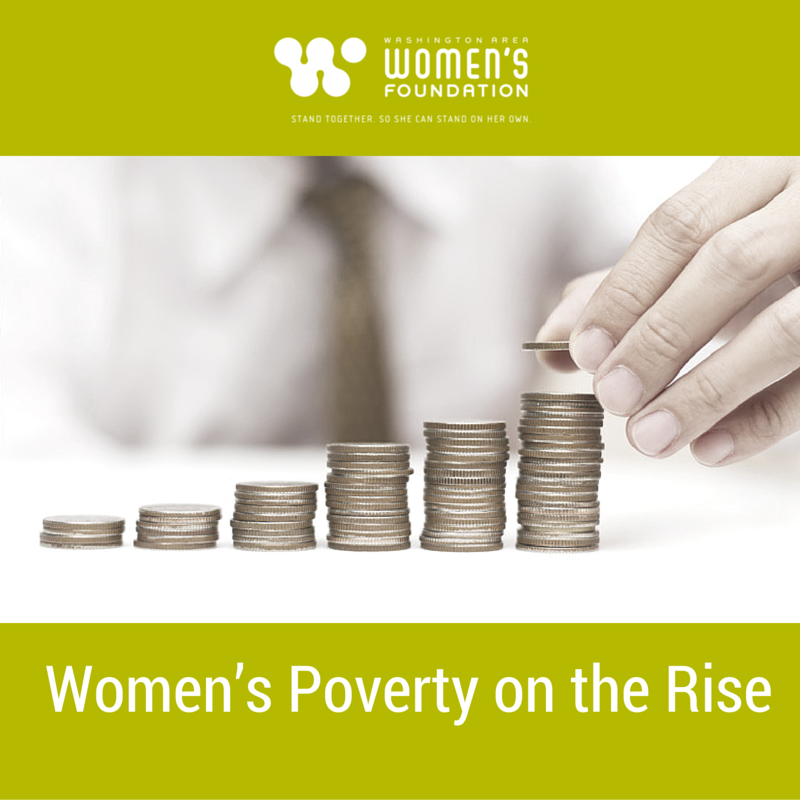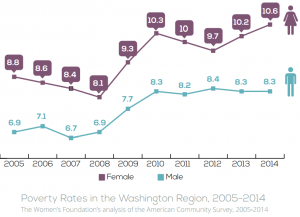The Women’s Foundation is committed to building pathways out of poverty for women and girls across our region. As we work to achieve our mission, we recognize the value of having the most updated data on the status of women and girls in our community at our fingertips. We constantly analyze and disaggregate survey data to shed light on the issues that impact the program areas we direct our grant investments. This knowledge enables us to be better positioned to invest in programs and strategies that effectively support a woman’s journey to economic security.
Our latest analysis on women’s poverty (available in a series of fact sheets on our website!) reveals a discouraging but well-known story for those of us interested in the issue. Years into the economic recovery and poverty rates are still on the rise for women. The number of women living in poverty in our region increased once again—from 10.2 percent in 2013 to 10.6 percent in 2014. While women’s poverty rates continues to rise, the poverty rate for men in our region has remained steady at 8.3 percent since 2010.
Single women with children and women of color face a higher risk of falling below the poverty threshold—$19,790 for a family of three in 2014. Currently, 25.1 percent of the female-headed households with children in our region are raising their families in poverty. Overall, about 15 percent of Black women and 13.2 percent of Latinas are struggling with economic hardship across the region as well.
There are many reasons why women fall below the poverty threshold, including unemployment, barriers to accessing education, lack of affordable childcare, and discrimination and the persistent gender wage gap. But one of the key factors is low-quality and low-income jobs. Many women in our region are working more than full-time at poverty-level wages with little to no benefits. The cost of living in the Washington region makes it nearly impossible for these women and their families to make ends meet. For instance, a family of three (one adult and two children) living below the poverty line in the District of Columbia earns only about $19,790 in a year; but, in order to meet basic needs, that same family would require an annual income of at least $85,000.
There are some key steps we can take to help women on the path to economic security, including: adopting critical policies and supports like quality, affordable early care and education; strengthening available safety net programs, and encouraging jobs with family-sustaining wages and benefits. We must also raise awareness about the needs and vulnerabilities of women with the recognition that their economic security isn’t just a “women’s issue.”
Our latest analysis on women’s poverty is an important reminder that the work we do together is crucial to our community. In collaboration with our Grantee Partners and our Donors, we are helping women access basic education, enroll in workforce development programs, get new jobs, access financial education programs and find high-quality and affordable early care and education for their children. Recognizing that gender matters, we are investing in women, and in doing so we impact entire families and communities.




